Inventory Stockouts Cost Retailers Up To $4.6B On Black Friday

Black Friday kicked the 2021 holiday season off with a bang.
Not only did roughly 22 million more consumers spend the day checking holiday purchases off their wish lists this year than in 2020, but 45% of them spent more on those Black Friday purchases than they did just one year ago.
While it remains to be seen whether consumers’ spending will meet expectations, it is clear that consumers are choosing the comfort and convenience of shopping online over going to physical stores.
PYMNTS’ latest study shows that 13% more holiday shoppers made purchases online than in stores this Black Friday, and 16% of this year’s shoppers made at least some of their purchases online.
We surveyed 2,060 U.S. consumers on Friday (Nov. 26) and Saturday (Nov. 27) about how they spent their Black Fridays to learn more about how consumers shopped and paid for the items on their holiday wish lists.
This is what we learned.
More consumers shopped this Black Friday than in any year since 2018. 45% of Black Friday shoppers spent more on their holiday purchases than they did in 2020.
The holiday season is here, and consumers are heading back to the stores to get ahead on their shopping. Our research shows that 65% of U.S. consumers who plan to shop this holiday season — 143 million people — made at least one purchase this Black Friday. This is up from the 60% who did so in 2020 and 2019 and the 62% who did so in 2018.
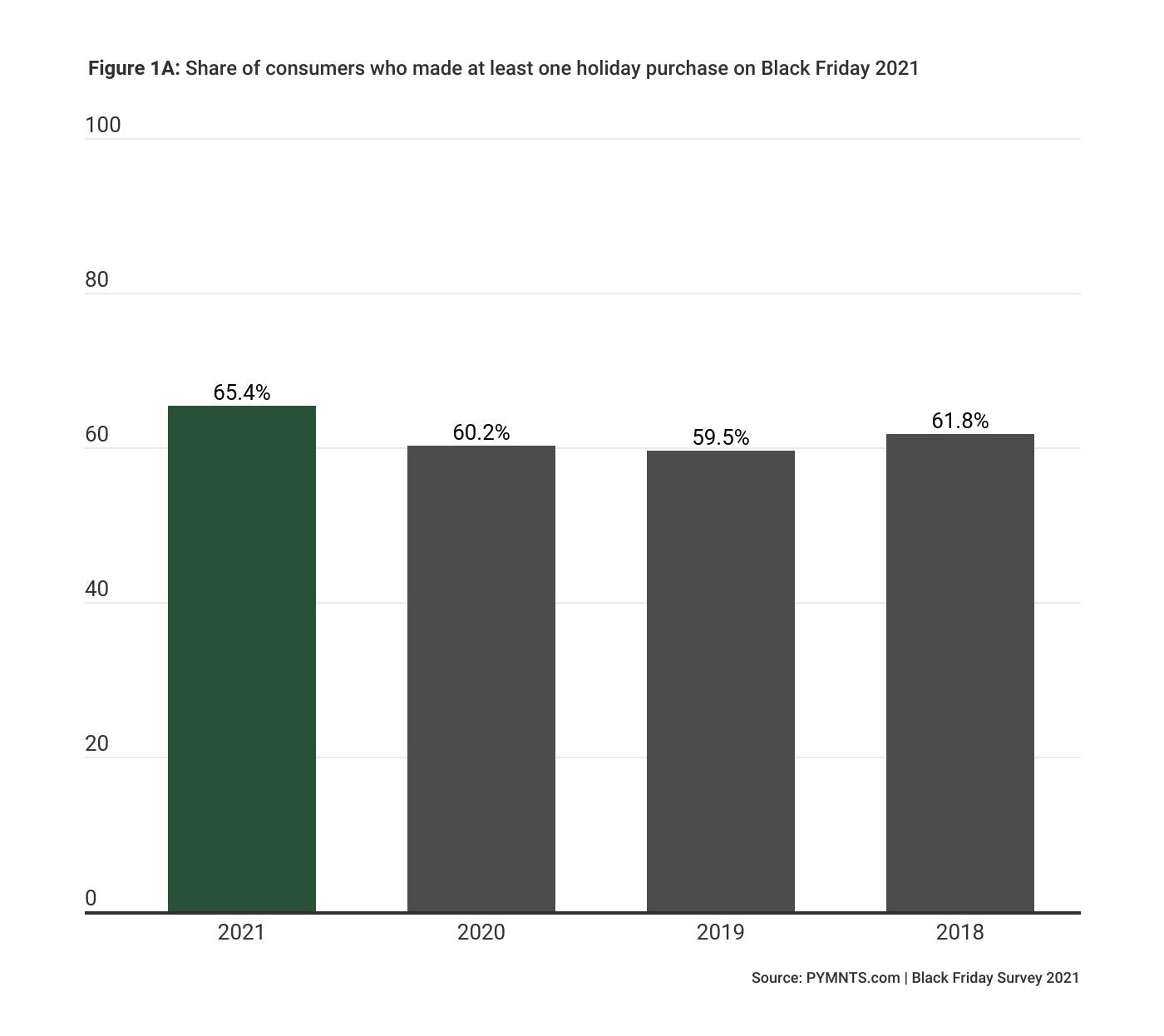

This year, Millennials were more likely than any age group other than Gen Z to have shopped this Black Friday and the most likely to have spent more than they did last year. Our data revealed that 76% of millennials made at least one purchase on Black Friday 2021, and 53% had spent more this year than they did last year.

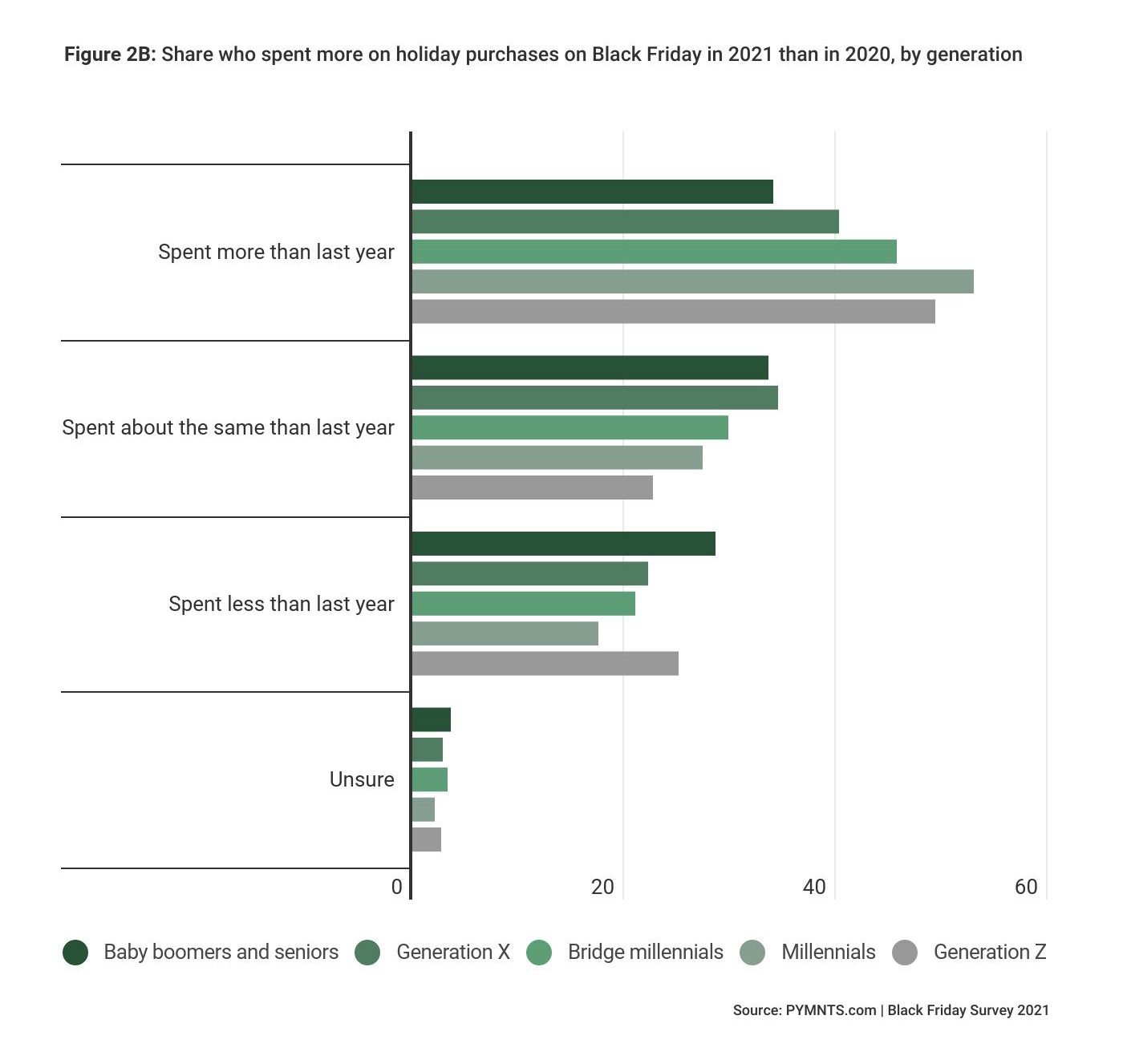
More Black Friday shoppers went back to the stores in 2021 than 2020, but eCommerce still won more business from Black Friday shoppers. Thirteen percent more shoppers made Black Friday purchases online than in-store.
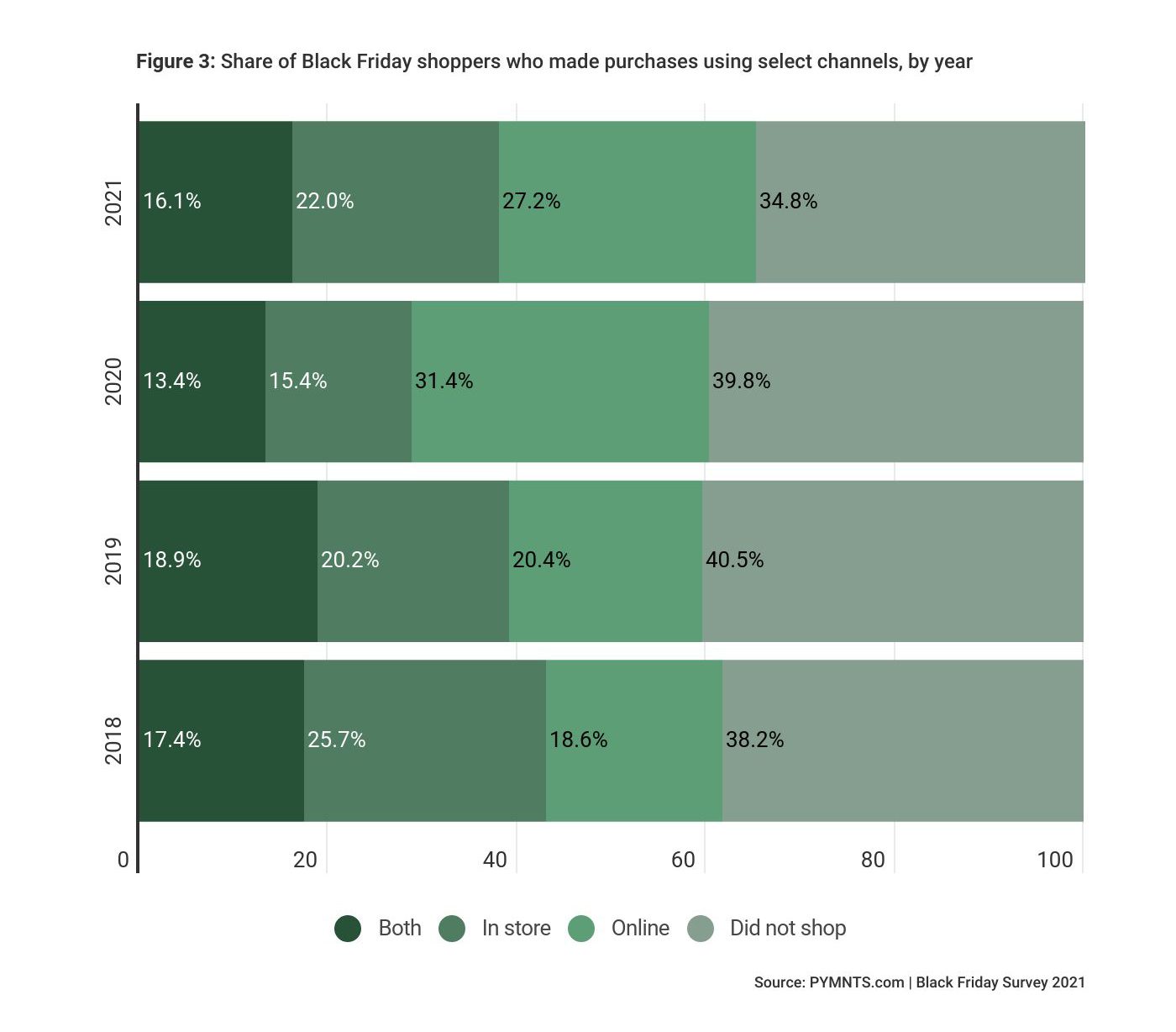
Clothing was by far the most popular item consumers shopped for this Black Friday, both online and in-store. We found that 49% and 53% of Black Friday shoppers bought clothing online and in-store, respectively.
Shoes were roughly tied with toys, musical instruments and other items needed for hobbies as the second-most common types of products holiday shoppers purchased on Black Friday this year.
Each of the top 11 most common types of retail items purchased this Black Friday was bought by more online shoppers than in-store shoppers.
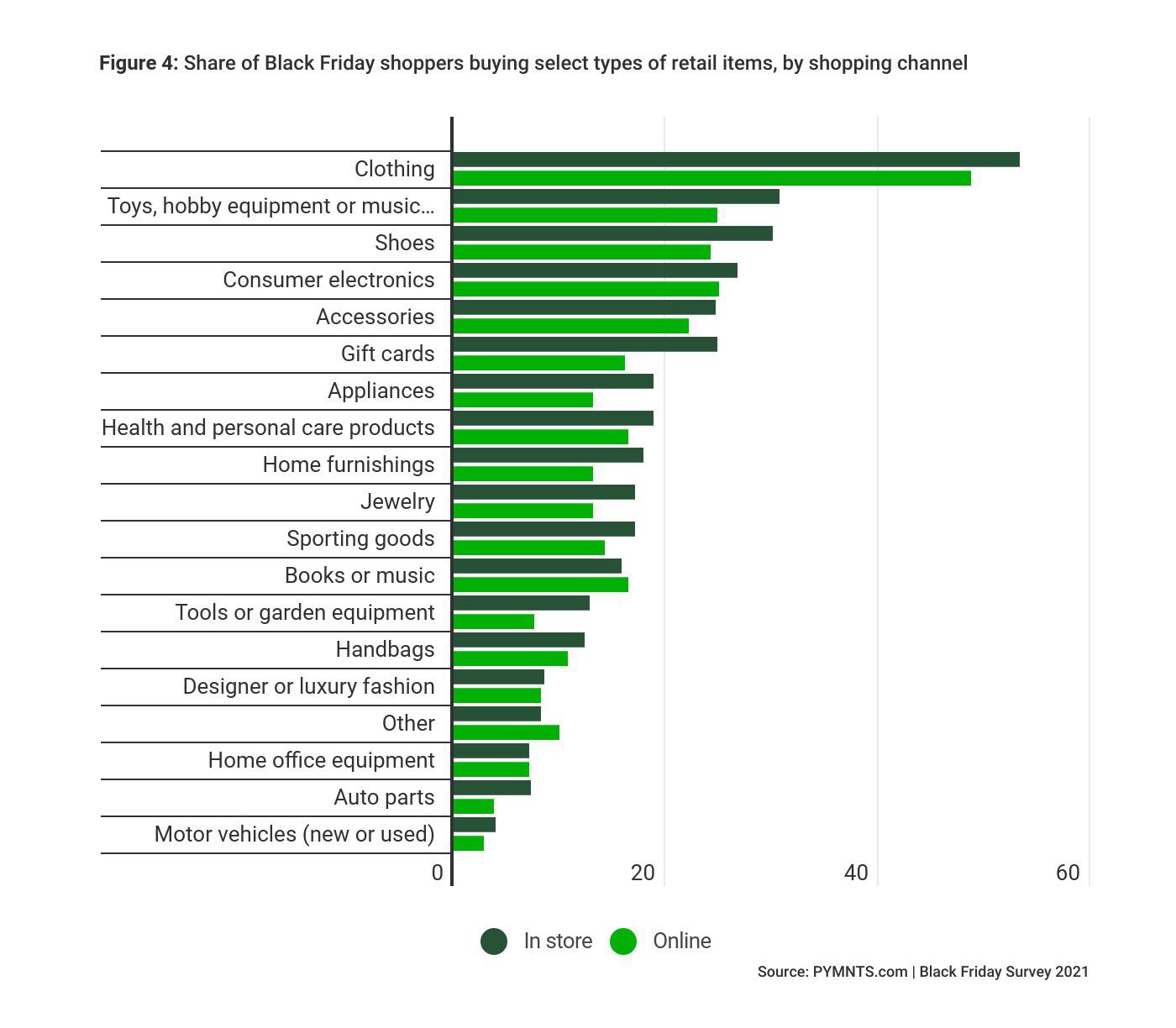
A notable 86% of Black Friday shoppers who bought online had their purchases shipped straight to their homes. Just 35% of them paid for shipping.
There was no one-size-fits-all approach to shopping online this Black Friday. The most common way consumers obtained their online purchases was by having them shipped to their homes, as 86% did so. This is slightly down from the 91% who shipped their purchases straight to their doorsteps last year.
As fewer consumers had their online orders delivered, more opted to pick their purchases up on-site the same day. Up from the 11% who did so last year, 13% of online shoppers picked their purchases in-store this year. Meanwhile, 12% chose curbside pickup, down from the 14% who did so in 2020.
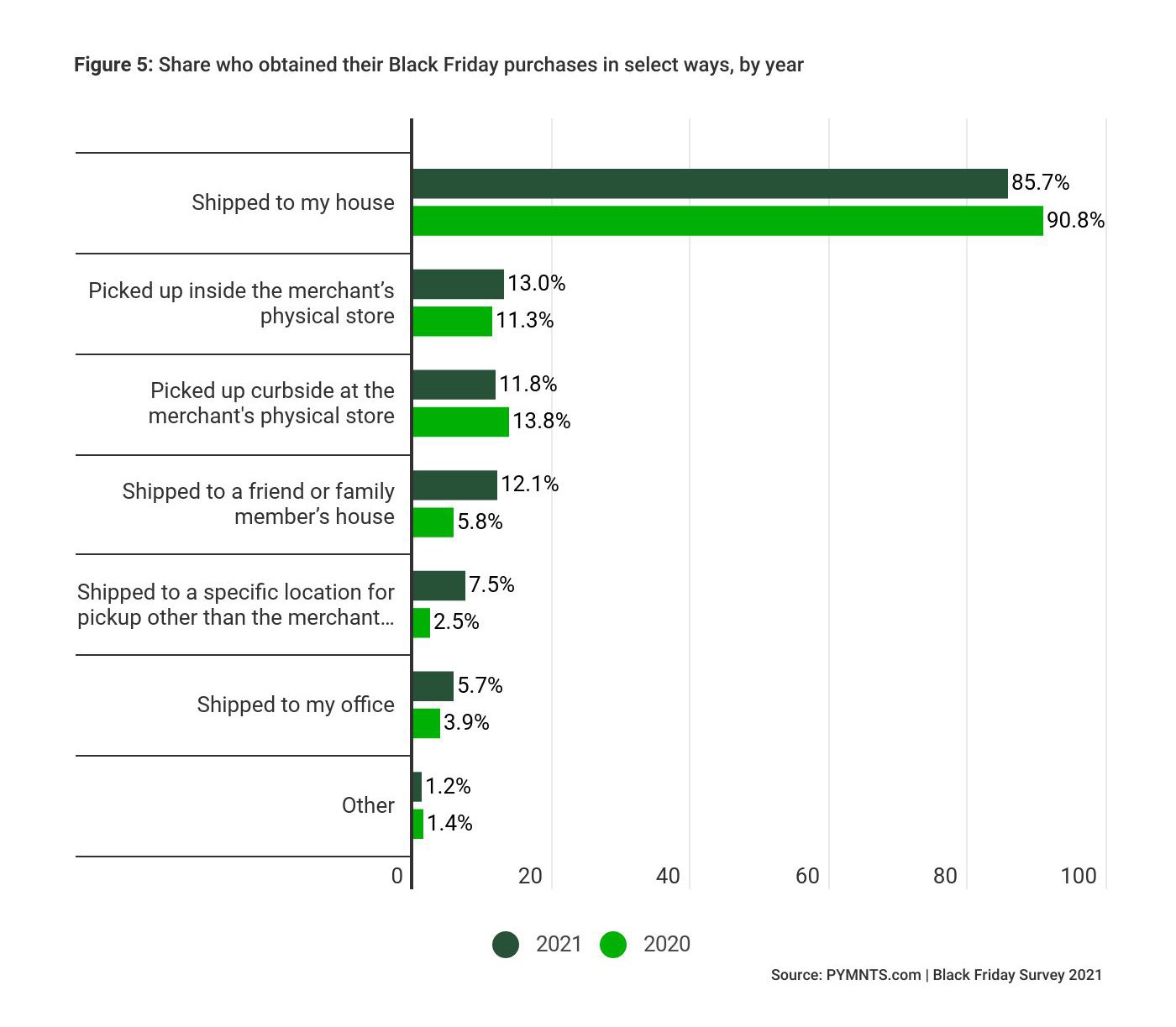
Thirty-seven percent of all eCommerce shoppers wound up paying for their purchases’ shipping costs, while the rest were able to circumvent shipping fees.
Sixty-three percent of online shoppers who avoided shipping fees said they could because the dollar amount of their purchase qualified them for free shipping. This was the most cited reason overall, although 53% had memberships that gave them access to free shipping options and 13% shopped with merchants that always shipped for free. Fifteen percent of consumers who did not pay product delivery fees said that shipping has simply always been free for them.
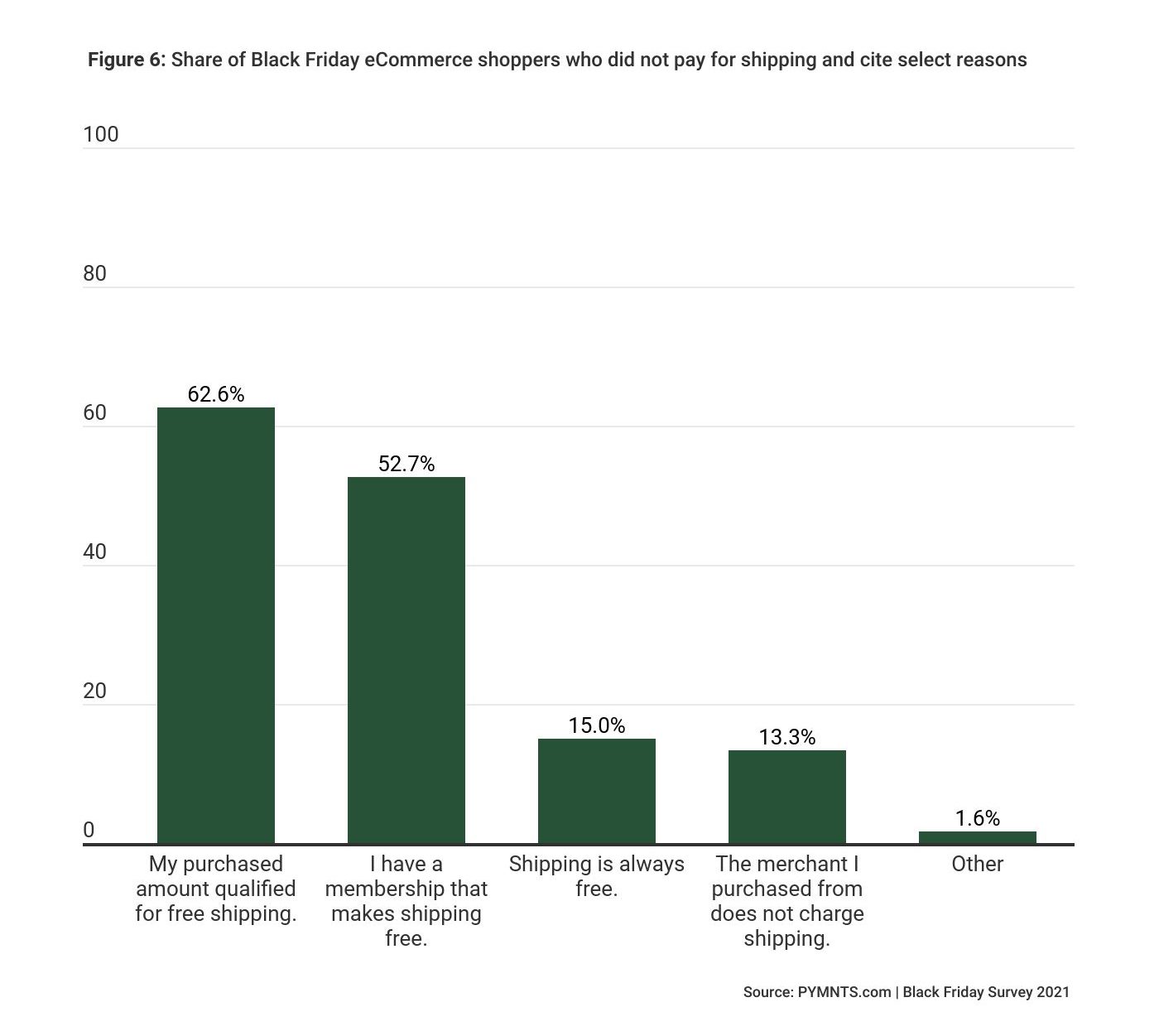
More consumers paid for Black Friday purchases with funds on hand than credit. Consumer buy now pay later (BNPL) use for online purchases increased 102% over last year, as did their use of debit cards.
Black Friday shoppers paid for online purchases using 1.7 different methods on average and 2.1 methods for in-store purchases on average.
Consumers tend to use different payment methods when shopping online than in-store. However, 45% of brick-and-mortar shoppers made purchases with debit cards this Black Friday — down from the 49% who did so last year, but still a greater share than those who used any other method. The share of online shoppers paying via credit card is holding steady at 54%, while the share paying via debit card has increased for the third consecutive year.
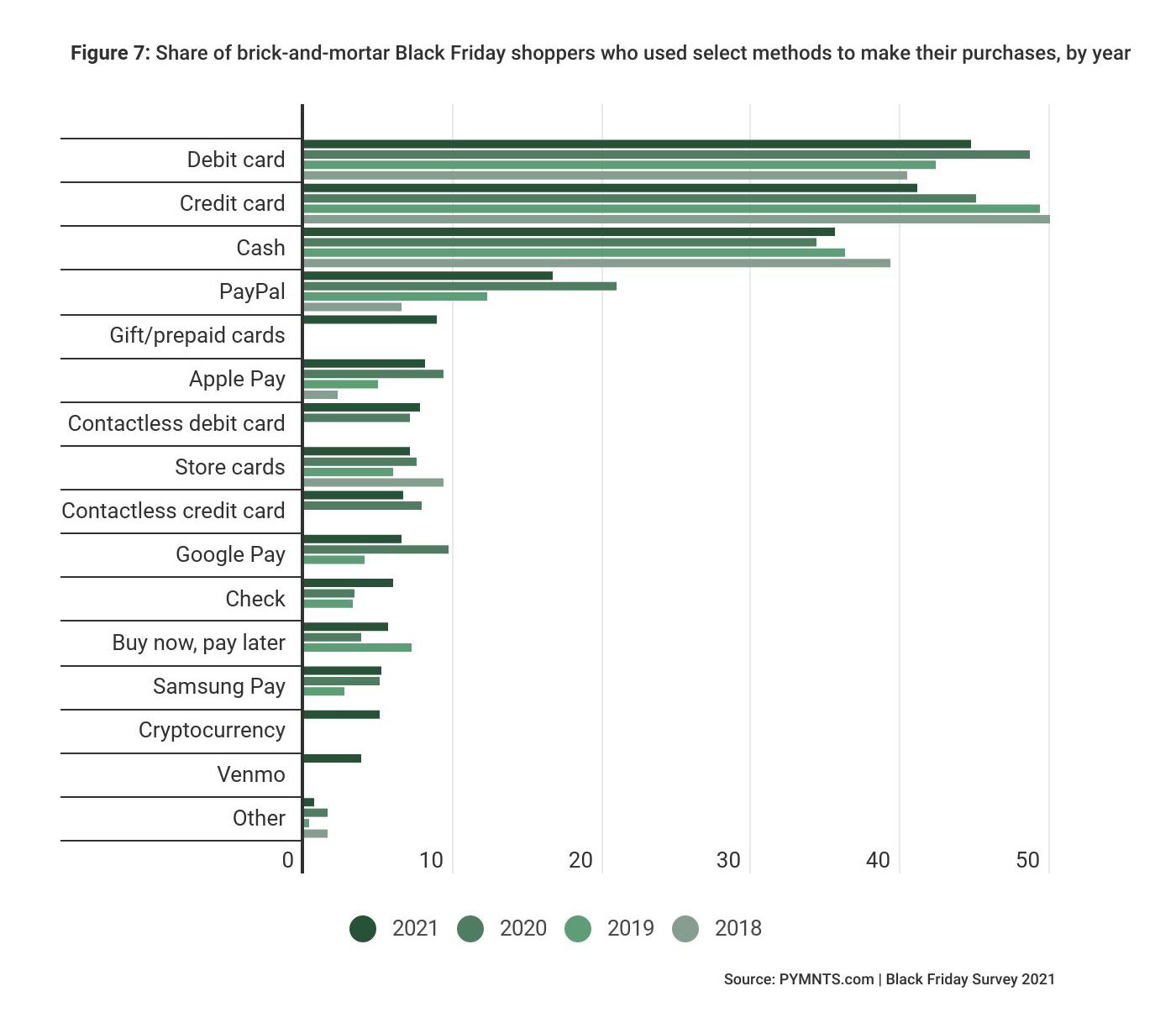
Digital payment methods, including digital wallets, buy now, pay later (BNPL) options and cryptocurrencies, were used by 28% of brick-and-mortar and 37% of online holiday shoppers. Gift cards also played a prominent role in driving holiday sales, as approximately 9% of shoppers paid via gift cards.

Inventory stockouts cost retailers up to $4.6 billion in lost Black Friday sales. We found that 38% of shoppers — 55 million people — could not buy at least one of the purchases on their list because retailers did not have it.
Among these 55 million shoppers who were unable to find at least one of their purchases on the first try because it was out of stock, 32% say that three or more of the items they wanted to buy were unavailable at their retailer of choice. On average, each of these shoppers could not find 2.2 items at the first store they visited because the items were out of stock.
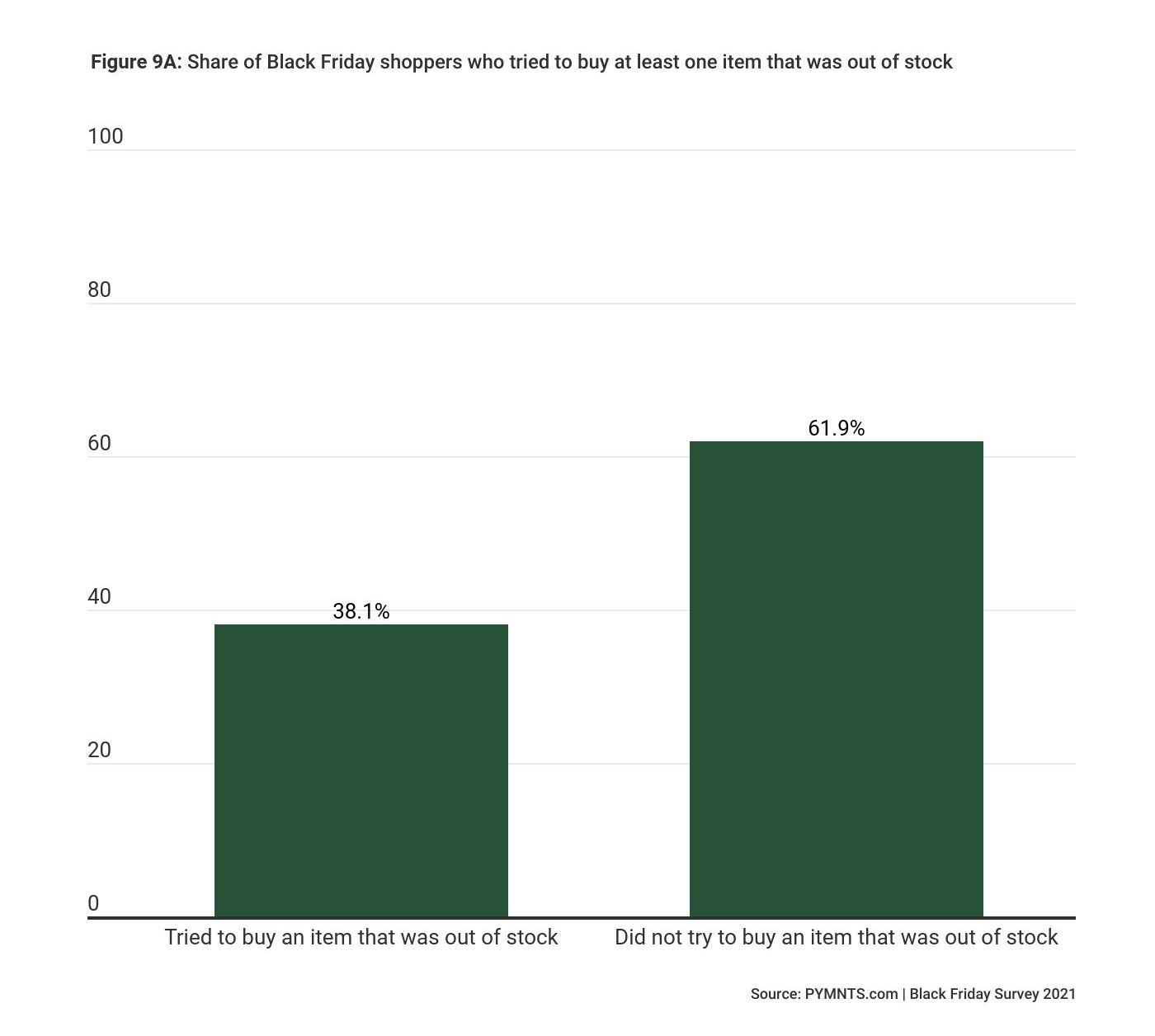
PYMNTS’ research shows that consumers intended to spend $253 on these out-of-stock items on average. Retailers, therefore, lost a collective total of up to $30 billion.
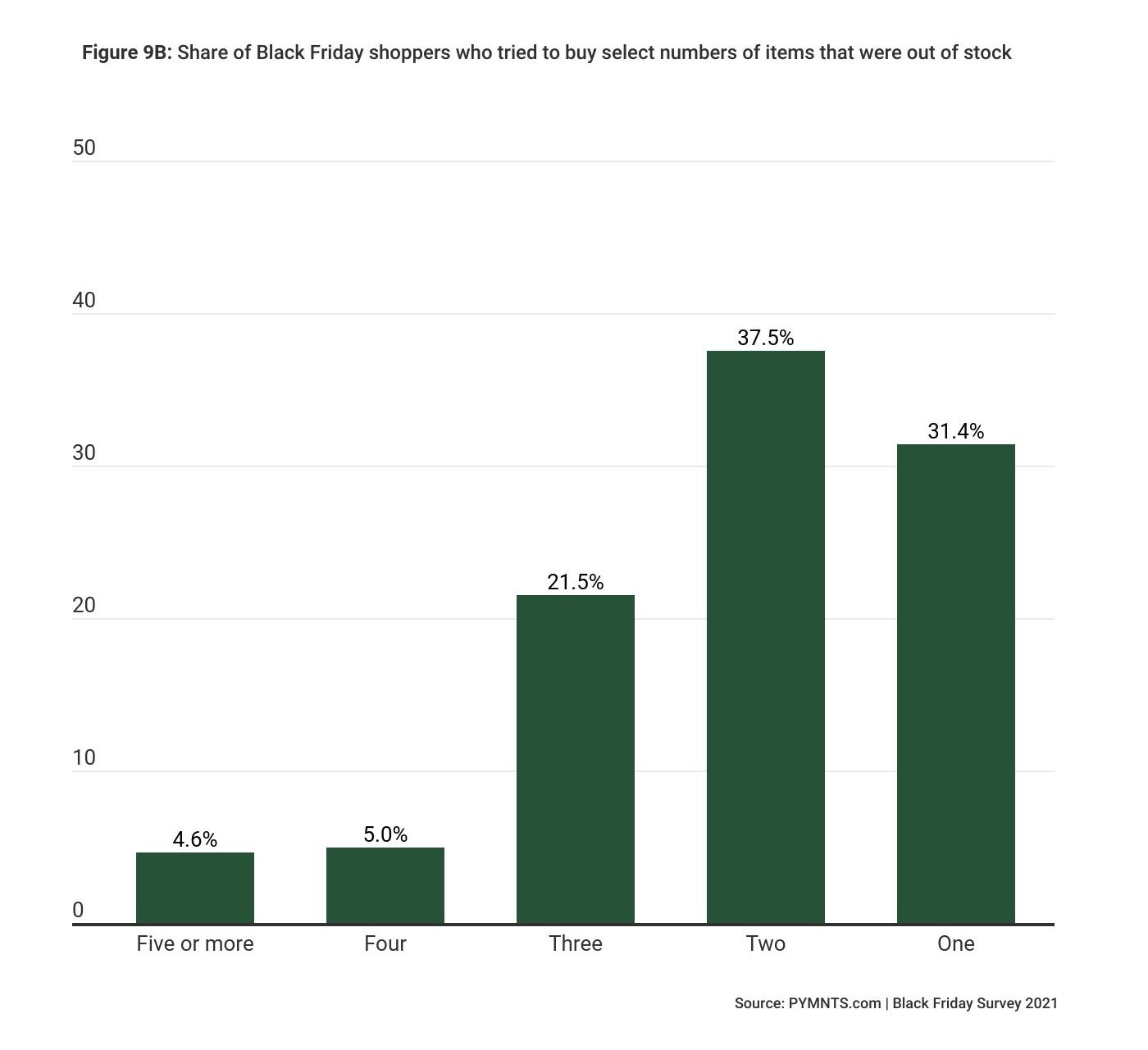
The strong majority of shoppers who could not find the items on their lists the first time ultimately went to other retailers to find the items on their lists or wound up buying alternative items. Still, many also decided not to buy anything at all. Our data shows that 15% of the shoppers who could not find the items they wanted to buy at the first shop they tried ended up buying nothing.
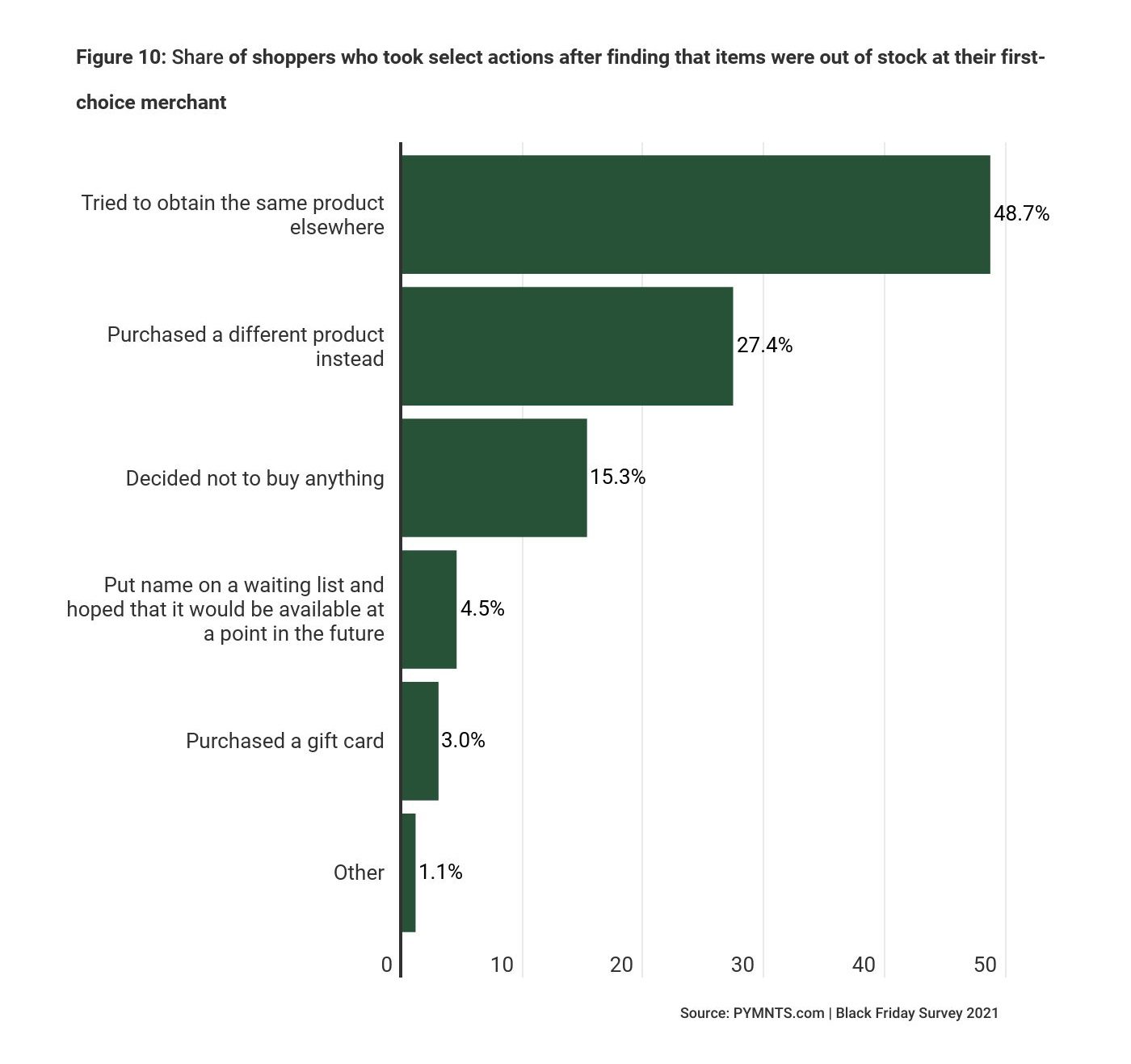
This means that if these shoppers had found their items in stock at the retailers they visited first, they would have spent at least $4.6 billion more this Black Friday than they actually did.
Only 35% of consumers — 76 million people — opted out of shopping this Black Friday, down from the 40% who steered clear last year. These consumers avoided shopping chiefly because of crowded stores and because they preferred to spend their time doing other things.
Many reasons led some consumers not to shop this Black Friday, primarily crowded stores. PYMNTS found that 34% of consumers who did not shop this Black Friday said they chose not to because the stores were too crowded. This represents a decline from the 41% who said the same in 2020.
The second-most common reason consumers gave for not shopping was that they simply wanted to spend their time doing other things. Roughly the same share of consumers cited this as their reason in 2021 as did in 2020, with 27% doing so this year.
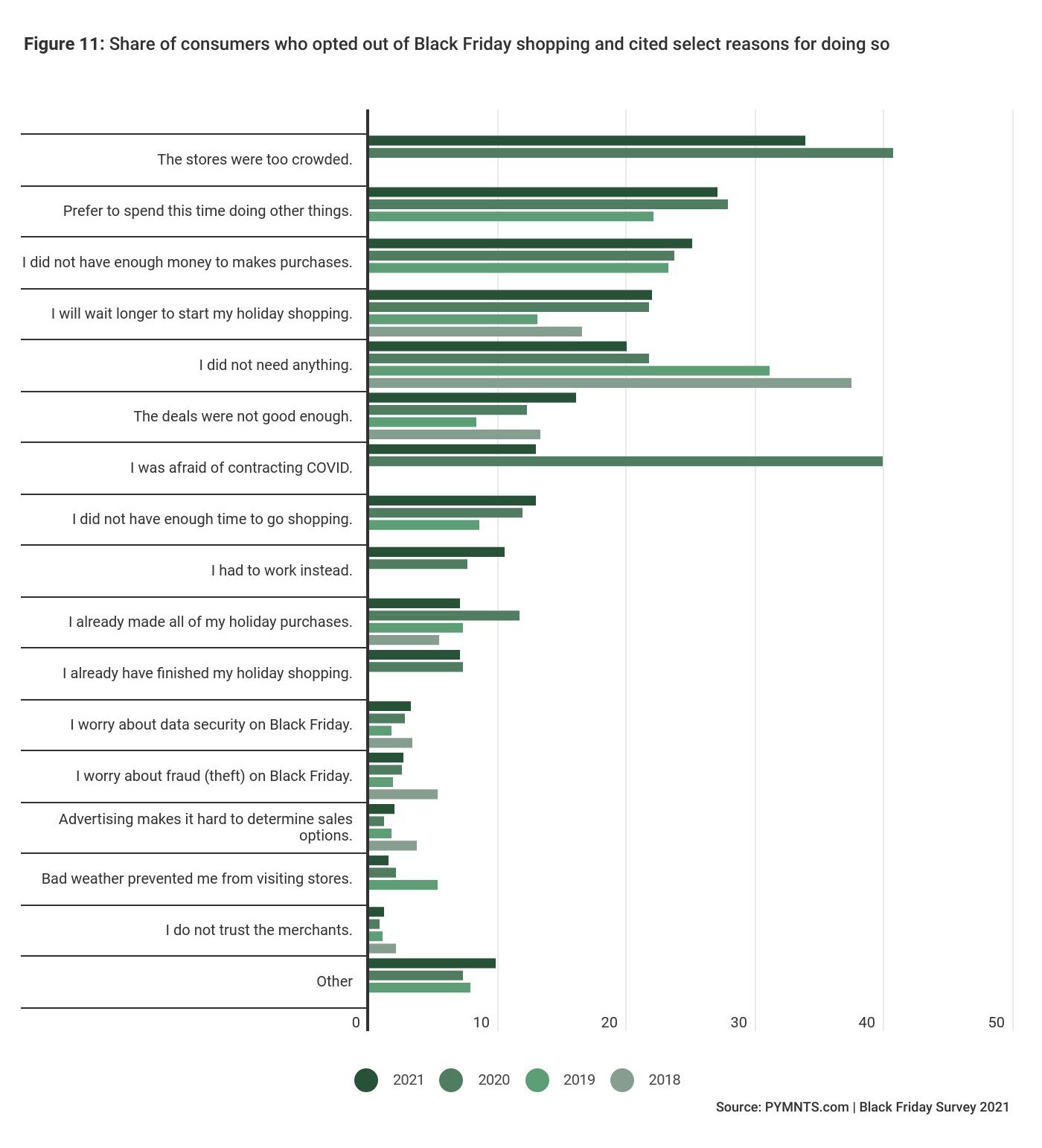
Approximately one-quarter of consumers who did not shop said they opted not to because they did not have enough money, meaning the share of consumers saying they could not afford to make holiday purchases on Black Friday has risen for three consecutive years.
Consumers say they plan to spend 47% of their total holiday expenditure online this year. A notable 40% of consumers plan to make the majority of their holiday spending between Black Friday and Christmas.
Black Friday is no longer the pinnacle of the holiday shopping season. Most consumers plan to spread their holiday shopping across the month, and just 40% of consumers say they intend to spend between 50% and 100% of their overall holiday spend between Black Friday and Christmas. A slim 7% of consumers intend to make the majority of their holiday spending after Christmas, whether online or in-store.

In total, holiday shoppers expect to spend 47 cents on each dollar online rather than in-store.
This means that retailers have an ongoing opportunity to convert as many as 188 million holiday shoppers between now and Christmas — with even more planning to buy holiday gifts after the fact.
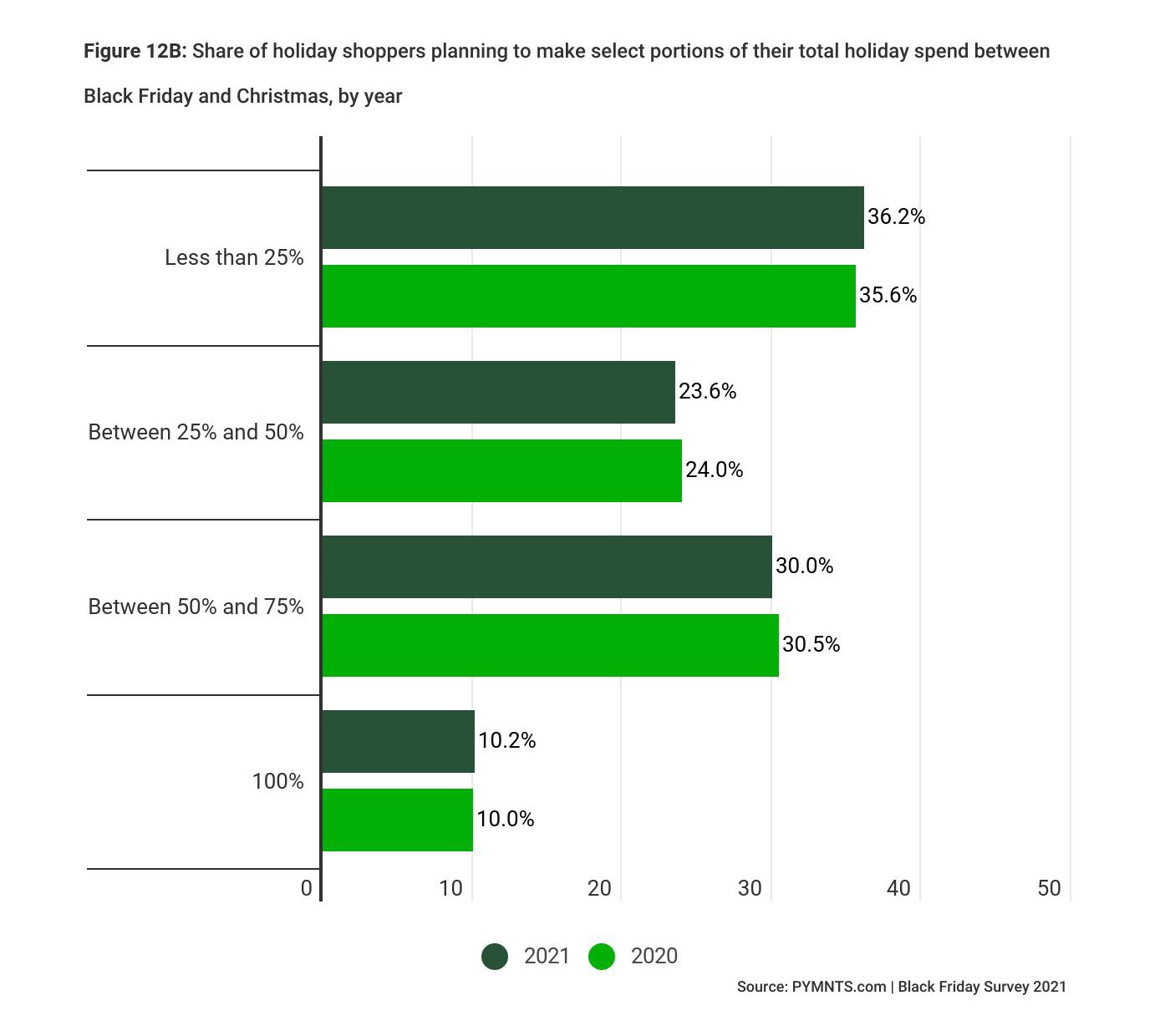
Conclusion
Inventory shortages cost U.S. retailers up to $4.6 billion in sales on the opening weekend of the 2021 holiday shopping season, but there still is time to regain lost ground. We calculate that 288 million consumers across the nation are planning to cross more holiday purchases off their checklists in the month between Black Friday and Christmas.
Offering a broad variety of digital shopping and payment options will be key to winning them over in the coming weeks. In practice, this means that retailers must enable shoppers to make purchases in the manner of their choosing, whether via delivery, curbside pickup, in-store pickup or otherwise. It also means offering digital payment options such as BNPL and digital wallets. Adapting to digital-first consumers’ preferences will be key for retailers to drive conversion this holiday season.